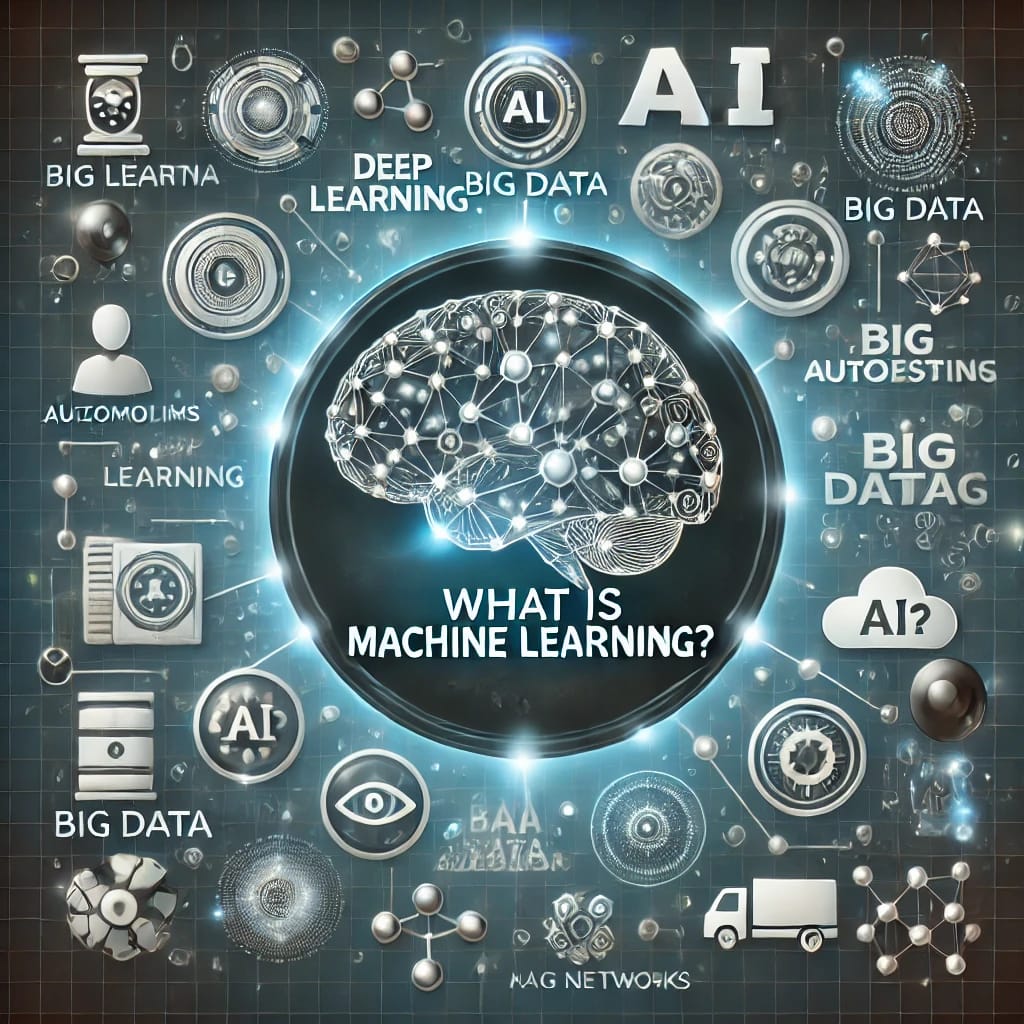

Machine Learning Tutorial
Machine Learning Tutorial
Introduction
Machine Learning (ML) is a rapidly evolving field that enables computers to learn from past data and improve their performance without being explicitly programmed. It is a subset of Artificial Intelligence (AI) and is used in various real-world applications such as speech recognition, recommender systems, image recognition, and self-driving cars.

Arthur Samuel first introduced the term “Machine Learning” in 1959, defining it as the ability of machines to learn from data and make predictions without human intervention. Today, ML combines statistics and computer science to create algorithms that analyze large datasets and generate insights for decision-making.
Complete Python Course with Advance topics:-Click Here
SQL Tutorial :-Click Here
How Machine Learning Works
Machine Learning algorithms process vast amounts of data to build mathematical models that predict outcomes. The process follows these basic steps:
- Data Collection: Gathering a significant amount of structured and unstructured data.
- Data Preprocessing: Cleaning and transforming the raw data into a usable format.
- Model Selection: Choosing an appropriate algorithm based on the problem.
- Training: Feeding the algorithm with historical data to learn patterns.
- Evaluation: Testing the model with new data to check its accuracy.
- Prediction: Using the trained model to make predictions or classifications.
Features of Machine Learning
- Detects patterns in large datasets.
- Automatically becomes better by learning from historical data.
- Makes predictions with high accuracy.
- Able to handle material that is both structured and unstructured.

Need for Machine Learning
Machine Learning is essential due to the increasing complexity of data and the need for automated decision-making. Key reasons for ML adoption include:
- Handling Big Data: Processes massive amounts of data efficiently.
- Automation: Reduces human intervention in decision-making.
- Improved Accuracy: Enhances predictions and classifications.
- Cost and Time Efficiency: Saves both resources and time.
Types of Machine Learning
Three major categories can be used to classify machine learning:
1) Supervised Learning
In supervised learning, algorithms learn from labeled training data and make predictions based on the input-output mapping. It is further divided into:
- Classification: Identifies categories, e.g., spam detection in emails.
- Regression: Forecasts continuous data, such as home values.
2) Unsupervised Learning
Unlabelled data is used to teach the system patterns and structures in unsupervised learning. It consists of:
- Clustering: Groups similar data points together, e.g., customer segmentation.
- Association: Finds relationships between variables, e.g., market basket analysis.
3) Reinforcement Learning
Reinforcement Learning (RL) is a feedback-based approach where an agent learns to perform actions by receiving rewards or penalties. It is widely used in robotics and game AI.
History of Machine Learning
- 1834: Charles Babbage conceptualized the first programmable machine.
- 1936: Alan Turing developed the Turing machine.
- 1950: Alan Turing proposed the question, “Can machines think?”
- 1952: Arthur Samuel created a self-learning checkers program.
- 1959: The term “Machine Learning” was coined by Arthur Samuel.
- 1997: IBM’s Deep Blue defeated chess champion Garry Kasparov.
- 2012: AlexNet, a deep learning model, revolutionized image classification.
Download New Real Time Projects :-Click here
Complete Advance AI topics:- CLICK HERE
Conclusion
Machine Learning is transforming industries by automating processes, enhancing decision-making, and improving accuracy. As advancements in AI continue, ML will play a crucial role in shaping the future of technology. Whether you are a student or a professional, learning Machine Learning can open doors to numerous opportunities in data science, AI, and automation.
Stay tuned for our upcoming tutorials, where we will dive deeper into ML models, algorithms, and real-world applications!
machine learning books
machine learning tutorial w3schools
machine learning tutorial pdf
machine learning tutorial for beginners
machine learning tutorial python
machine learning javatpoint
machine learning course
machine learning tutorialspoint










17 comments